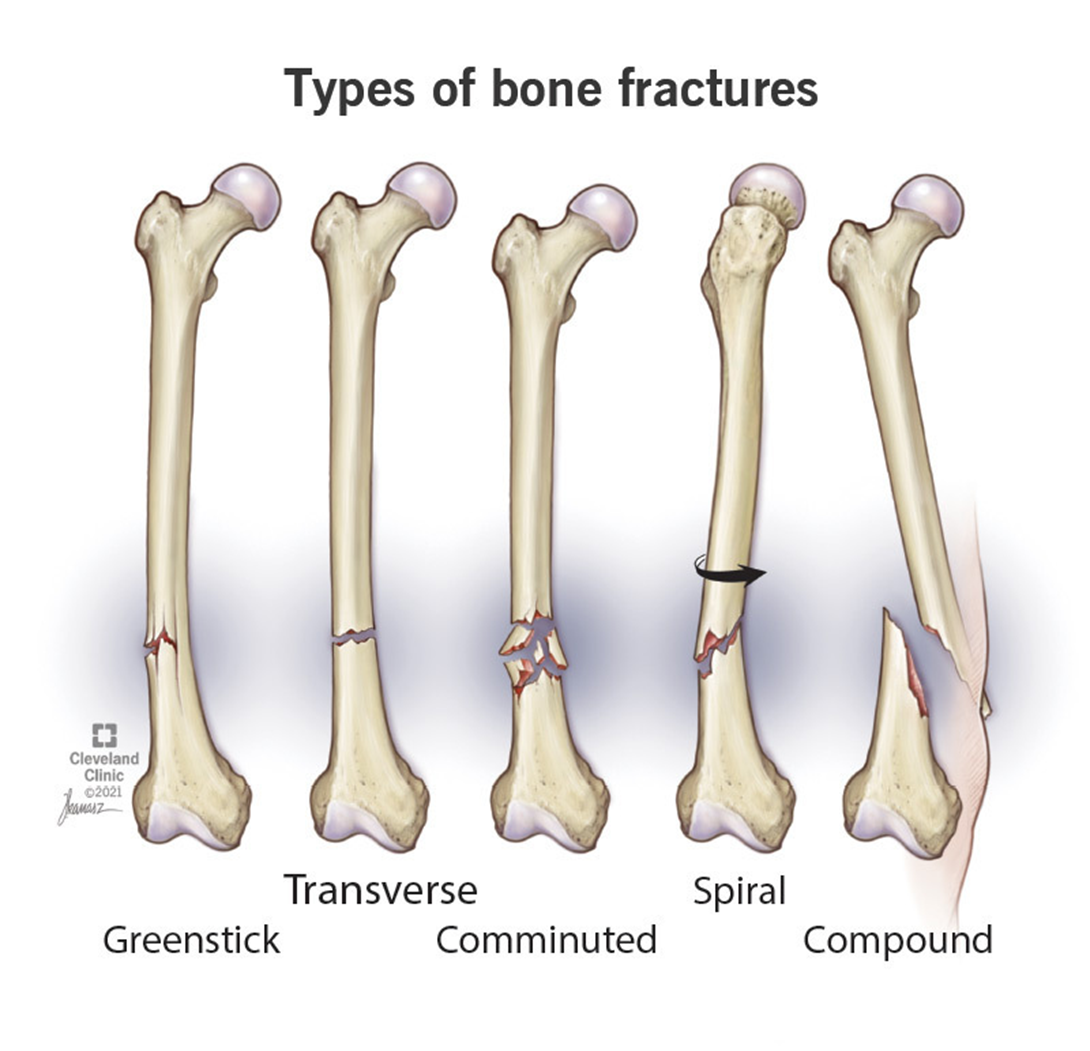A nurse in the emergency department is assessing a preschool-age child who has bruises on both arms and a spiral fracture of the left ulna. The child's parent tells the nurse that the child tripped over some toys and fell down. Which of the following actions should the nurse take?
Take pictures of the child's injuries once the parent leaves the room.
Have a facility security officer interview the parent.
Complete an incident report concerning the child's injuries.
Report the child's injuries to Child Protective Services.
The Correct Answer is D
Choice A reason: Taking pictures of the child's injuries once the parent leaves the room is not a correct action, as it violates the child's privacy and dignity. The nurse should not take pictures of the child without the parent's consent and only if it is required by the facility's policy or the law.
Choice B reason: Having a facility security officer interview the parent is not a correct action, as it is not within the scope of the security officer's role and may escalate the situation. The nurse should not involve the security officer unless there is a threat of violence or harm to the child, the parent, or the staff.
Choice C reason: Completing an incident report concerning the child's injuries is not a correct action, as it is not relevant to the child's situation. The nurse should complete an incident report only if there is an adverse event or error that occurred within the facility that affected the child's care or safety.
Choice D reason: Reporting the child's injuries to Child Protective Services is the correct action, as it is the nurse's legal and ethical duty to protect the child from potential abuse or neglect. The nurse should suspect child abuse based on the child's injuries, which are inconsistent with the parent's explanation and indicative of non-accidental trauma. The nurse should follow the facility's protocol and the state's law for reporting suspected child abuse.

Nursing Test Bank
Naxlex Comprehensive Predictor Exams
Related Questions
Correct Answer is B
Explanation
Choice A reason: This is not the correct choice because this assignment is not appropriate for a licensed practical nurse. A client who requires discharge instructions for type 1 diabetes mellitus needs education on self-care, medication administration, blood glucose monitoring, diet, and exercise. These are complex tasks that require the knowledge and skills of a registered nurse.
Choice B reason: This is the correct choice because this assignment is appropriate for a licensed practical nurse. A client who is 1 day postoperative and has a continuous bladder irrigation needs routine care, such as vital signs, wound assessment, fluid intake and output, and catheter care. These are basic tasks that can be performed by a licensed practical nurse under the supervision of a registered nurse.
Choice C reason: This is not the correct choice because this assignment is not appropriate for a licensed practical nurse. A client who requires a blood transfusion to be administered needs careful monitoring, such as checking for compatibility, verifying informed consent, observing for adverse reactions, and documenting the transfusion. These are advanced tasks that require the judgment and authority of a registered nurse.
Choice D reason: This is not the correct choice because this assignment is not appropriate for a licensed practical nurse. A client who is receiving IV chemotherapy needs specialized care, such as preparing and administering the medication, managing side effects, providing emotional support, and following safety precautions. These are specialized tasks that require the training and certification of a registered nurse.
Correct Answer is D
Explanation
Choice A reason: This is not the correct choice because this action is not legally required or ethically appropriate. The client has the right to refuse treatment and leave the hospital at any time, as long as she is competent and informed of the risks and consequences. The nurse should not coerce or threaten the client to stay against her will.
Choice B reason: This is not the correct choice because this action is not helpful or respectful. The client may have valid reasons for wanting to go home, such as personal or financial issues. The nurse should not assume that the client is anxious or irrational and offer her a sedative, which may impair her judgment and consent.
Choice C reason: This is not the correct choice because this action is not necessary or professional. The client is not a threat to herself or others, and does not need to be restrained or guarded by a security officer. The nurse should not use intimidation or force to prevent the client from leaving.
Choice D reason: This is the correct choice because this action is the best practice and the standard procedure. The nurse should explain to the client the benefits of staying and the risks of leaving, and document the conversation. The nurse should also ask the client to sign the Against Medical Advice form, which states that the client understands the implications of her decision and releases the hospital and the provider from liability.
Whether you are a student looking to ace your exams or a practicing nurse seeking to enhance your expertise , our nursing education contents will empower you with the confidence and competence to make a difference in the lives of patients and become a respected leader in the healthcare field.
Visit Naxlex, invest in your future and unlock endless possibilities with our unparalleled nursing education contents today
Report Wrong Answer on the Current Question
Do you disagree with the answer? If yes, what is your expected answer? Explain.
Kindly be descriptive with the issue you are facing.
